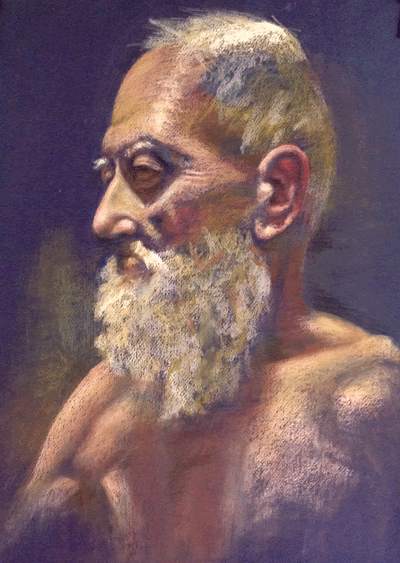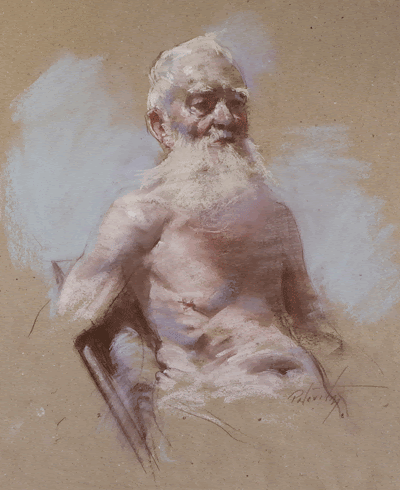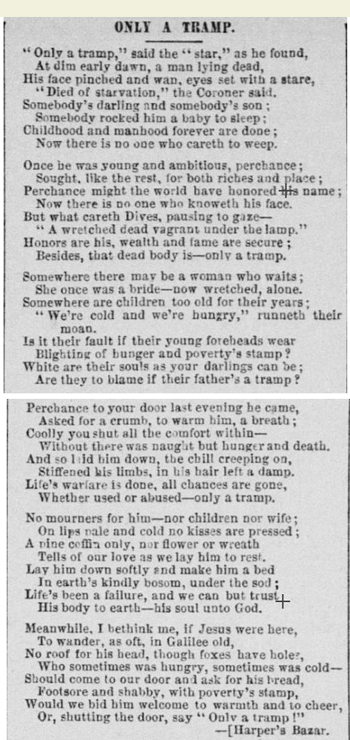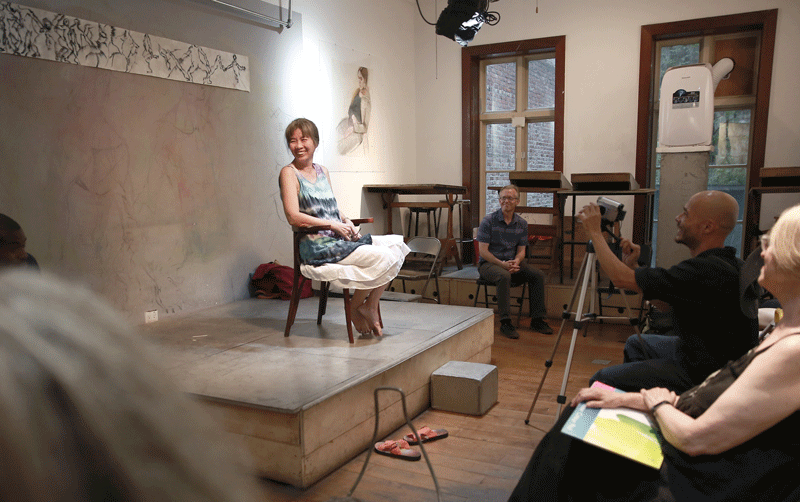|
Spring Studio COMMENTARY Troubles in St. Thomas
|
Tram, Jean Marcellino, pastel\\ |
| Police Report:
A Memoir Fragment for the Holiday Season He
was some mother's darling. He was some mother's son. "A Tramp on the Street," lyrics adapted by Grady and Hazel Cole, 1939, from a poem published in 1877 titled "Only a Tramp." (see postscript below) Funny, in the bright afternoon sunlight the lines of the policeman’s face appeared incised into his flesh as though carved into pale, earth-colored clay, his face a sculpted mask. His eyes, two small dark points, focused on me. For a second I imagined that the flesh surrounding them was expanding into an immense barren landscape of hills and valleys -- monotone, dry and desolate. I glanced down at his nametag. “CHAN,”
it read. A second police car drove up and parked illegally at the bend of the curve of Forsyth and Broome. Two officers got out, a woman who immediately leaned back on the car looking at me and slowly folded her arms with false nonchalance, and a man who took a sturdy stance stationing himself on the Broome Street sidewalk between the car and the corner building. In doing so, the two new arrivals made a complete semi-circular barrier that surrounded me and a homeless man who had asked me to help him. With the corner building to our backs, I felt imprisoned in a zone of deadly unfriendliness. What had I got myself into? Why had two
police cars shown up for a simple report of the theft of an ID, a
bankcard, and a phone? Why were they surrounding us as though we were
criminals? The homeless man was small and short, probably of Irish descent. He leaned on a cane. Once he was a licensed plumber, he told me, and he had a grown daughter living somewhere near NYC. Officer Chan said that he wanted to take him into the precinct to write the report. I argued and insisted that the cops write out a report on the spot. All of a sudden the homeless man said something flip. I immediately turned my face to him and said, “Don’t make jokes. This is serious. I am trying to help you. Don’t make it difficult,” all the while thinking to myself, “Oh, no, he could be one of those lost souls who want to provoke the cops into beating them up,” and all the while becoming panicked by the scenario unfolding. “Be careful.” I thought to myself. “These cops have guns.” My brain shifted into high alert, with an awareness that was not fear, but a distant cousin to fear. I said firmly to Officer Chan, “You can’t take him to the precinct. I won't let him go with you. I know you don’t want to write up reports that make New York City look like a place full of crime, but this man needs a police report number in order to get replacements for his papers.” After a brief exchange of words, one of the cops got a clip board out of the police car and began to question the homeless man and to write a report. It took about 20 minutes to get the information, and the task was done on the sidewalk in the daylight. The report completed, the lady cop -- trim, tall, well-groomed, neatly costumed in NYC cop blue, cool, prime, fine, armed, and still leaning on the police car with her arms across her chest -- focused her eyes on me and asked with a touch of disdain in her voice, “Why are you helping him?” Funny, I looked her square in the eyes and surprised myself as I blurted out the first thing that came to my mind, “Because I am a Christian.” Then I added, “Last year I had a stroke and everyone helped me, so now I have to give back.” END
http://jopiepopie.blogspot.com/search/label/Tramp %20on%20the%20Street%20%281939%29 Minerva Durham 917-375-6086 |
|
Paula Court - Photo - At Spring Studio
|
Click on E-Mail for Inquiry - regarding pricing and availability.
All artwork is copyright of the respective owner or artist. All other material © Copyright 2020 New York Art World ®. All Rights Reserved.
See: Minerva at Home - Minerva Studio Events - Petrosino Fourth of July - DeNiro Minerva Memoirs - Getting an Apartment
City Art - The Drawing Studio with Minerva Durham - Back To Top



